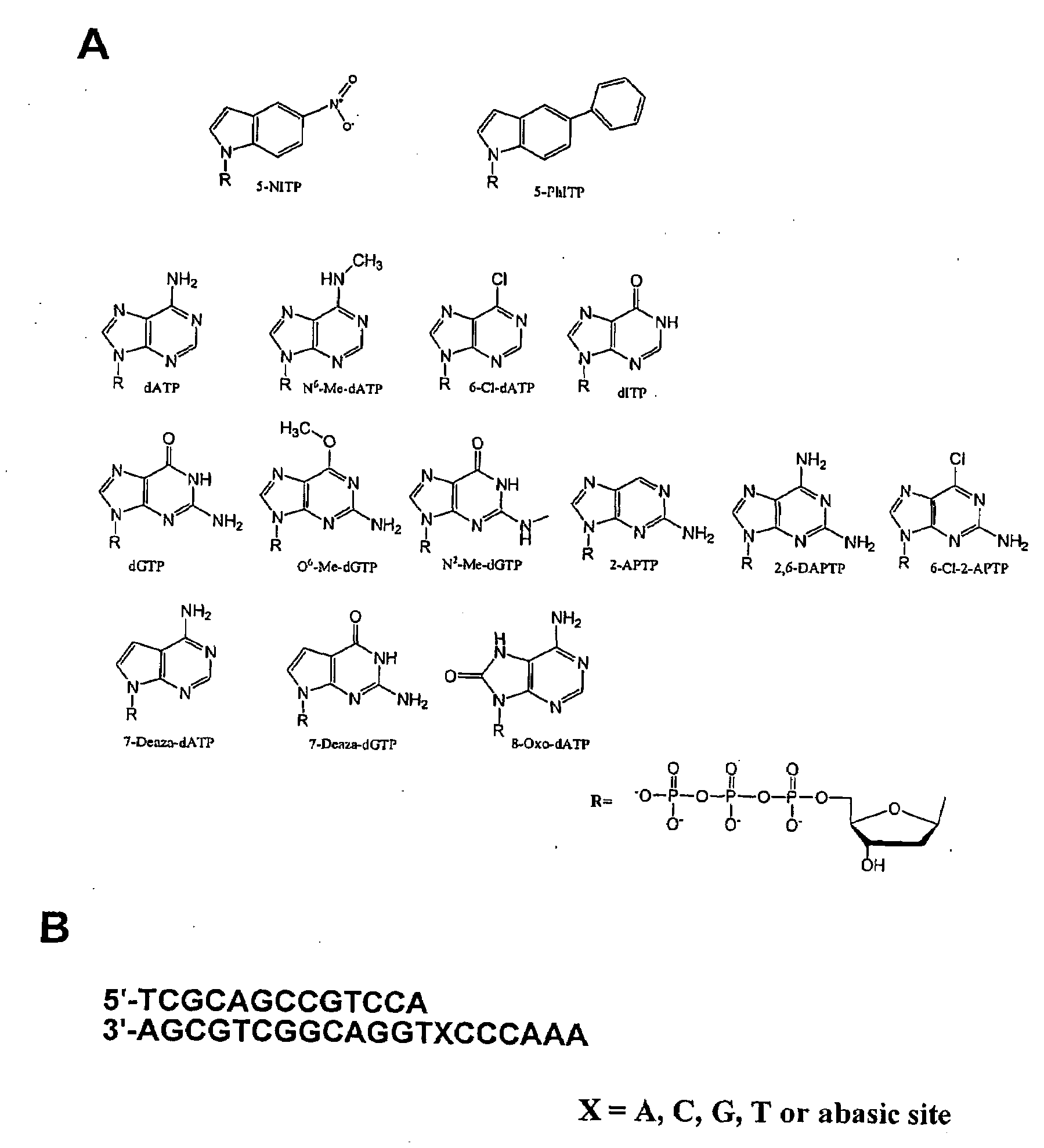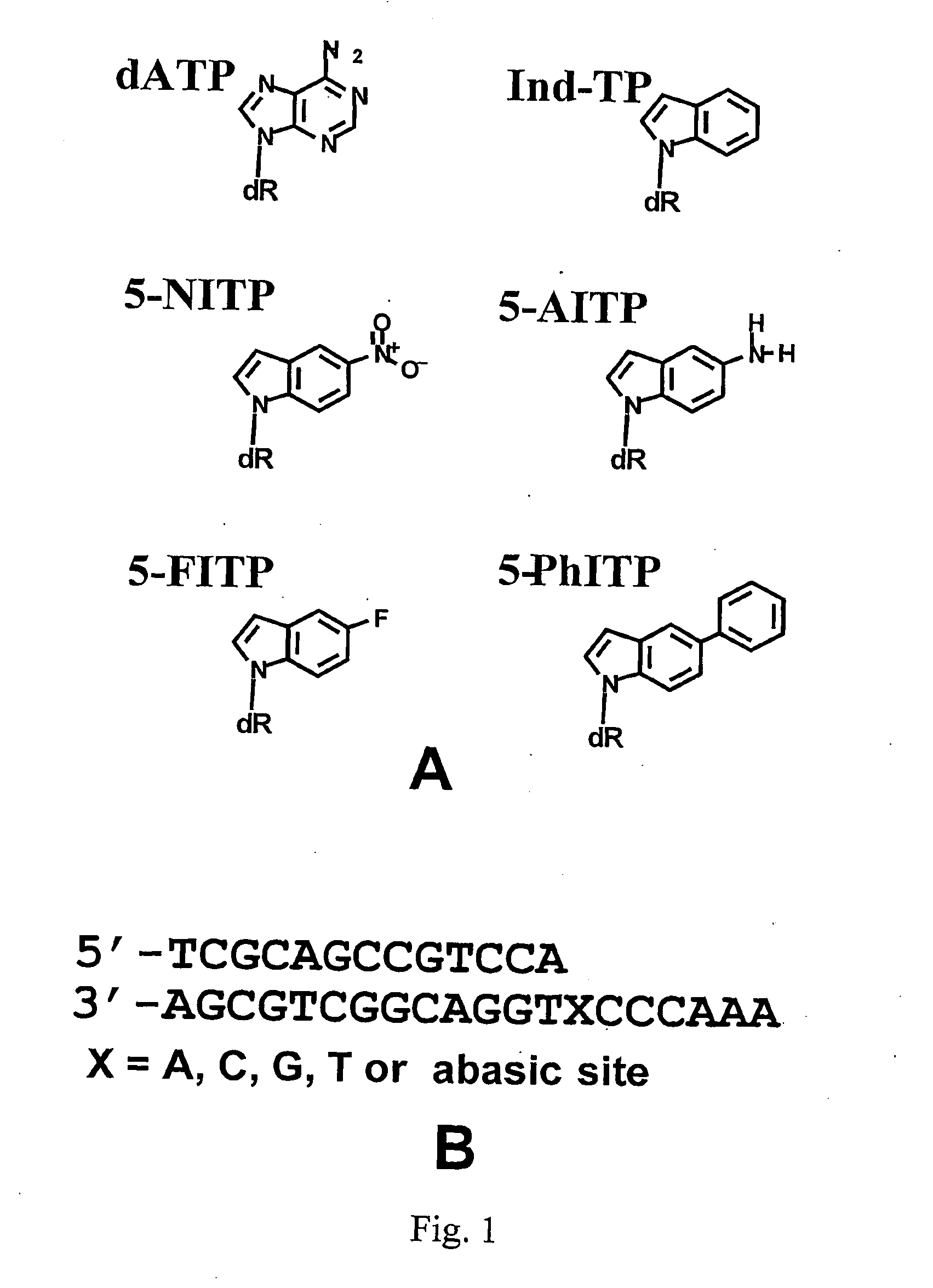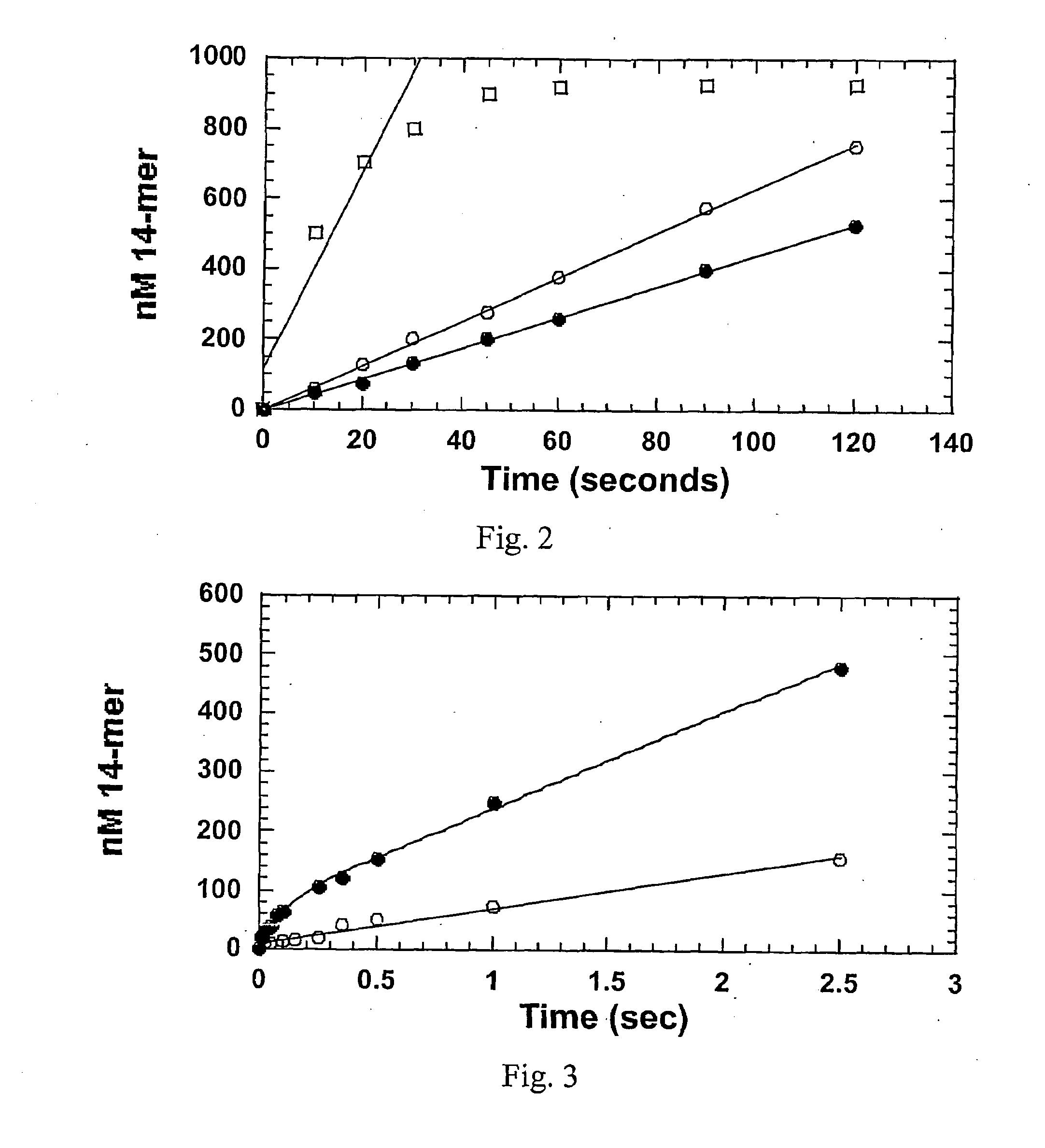Selective inhibitors of translesion DNA replication
a technology of translesion dna and selective inhibitors, which is applied in the direction of biocide, organic chemistry, drug compositions, etc., can solve the problems of limited therapeutic utility of these nucleotide analogs, limited widespread use of these agents, and further mutagenic events to potentiate oncogenesis, etc., to achieve faster polymerization and enhanced binding affinity
- Summary
- Abstract
- Description
- Claims
- Application Information
AI Technical Summary
Benefits of technology
Problems solved by technology
Method used
Image
Examples
example 1
The Use of Nonnatural Nucleotides to Probe the Contributions of Shape Complementarity and or π-Electron Surface Area During DNA Polymerization
[0134]Hydrogen-bonding, base-stacking, and solvation / desolvation contributions play significant roles in maintaining the stability of nucleic acid. Perhaps the most elusive question in nucleic acid metabolism is the extent to which each of these molecular forces is efficiently utilized by DNA polymerases during replication. The individual contributions of these forces during the polymerization process have been difficult to dissect due to the paradoxical nature of the nucleobases that compose DNA. Specifically, in addition to base-stacking capabilities, each nucleobase contains functional groups capable of hydrogen-bond interactions with water as well as with other acceptor-donor groups on other nucleobases.
[0135]Several laboratories have attempted to deconvolute this paradox by monitoring the kinetics of insertion of nonnatural nucleosides de...
example 2
Potential Chemotherapeutic Strategy for the Selective Inhibition of Promutagenic DNA Synthesis by Nonnatural Nucleotides
[0170]Current chain terminators containing natural nucleobases theoretically lack the intrinsic selectivity to inhibit one DNA polymerase versus another. Since these agents resemble their natural counterparts, they may be degraded by cellular enzymes that metabolize natural nucleotides. For example, enzymatic deamination of purine analogues such as dideoxyadenosine limits its use and may play a significant role in the development of drug resistance to natural nucleoside analogues.
[0171]To combat these complications, we attempted to exploit several of the unique features of the previously described nonnatural nucleotides that are displayed in FIG. 10. Specifically, we demonstrate that two of these nonnatural nucleotides are selectively inserted opposite damaged DNA that can be induced by chemotherapeutic agents. More importantly, these molecules act as potent and se...
example 3
Defining the Dynamics of Nucleotide Incorporation Opposite an Abasic Site: A Structure-Activity Relationship of Modified Purine Triphosphate Analogs
[0204]The replication of damaged DNA is considered to be a pro-mutagenic event1 that can culminate in the development of various diseases, the most notably of which is cancer. A commonly occurring form of DNA damage is an abasic site that can be produced both non-enzymatically and enzymatically through the action of various DNA repair enzymes. Although an abasic site is devoid Watson-Crick hydrogen bonding potential, most replicative DNA polymerases preferentially incorporate dATP opposite this lesion. This kinetic phenomenon is commonly referred to as the “A rule” of translesion DNA synthesis. Indeed, kinetic studies using gp43, the bacteriophage T4 DNA polymerase, demonstrate that dATP is incorporated opposite an abasic site with a ˜35-fold greater overall catalytic efficiency compared to dGTP. This difference is caused through enhance...
PUM
| Property | Measurement | Unit |
|---|---|---|
| Molar density | aaaaa | aaaaa |
| Molar density | aaaaa | aaaaa |
| Molar density | aaaaa | aaaaa |
Abstract
Description
Claims
Application Information
 Login to View More
Login to View More - R&D
- Intellectual Property
- Life Sciences
- Materials
- Tech Scout
- Unparalleled Data Quality
- Higher Quality Content
- 60% Fewer Hallucinations
Browse by: Latest US Patents, China's latest patents, Technical Efficacy Thesaurus, Application Domain, Technology Topic, Popular Technical Reports.
© 2025 PatSnap. All rights reserved.Legal|Privacy policy|Modern Slavery Act Transparency Statement|Sitemap|About US| Contact US: help@patsnap.com



